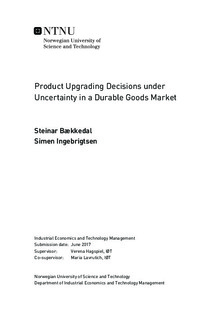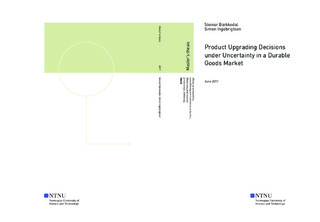| dc.description.abstract | This paper studies investment behavior of firms deciding when to introduce an upgrade in a durable goods market. The firm chooses both the investment timing and the price of the upgrade while facing the risk of the upgrade experiencing a serious malfunction and requiring a complete recall. More specifically, the paper aims to show what incentives a firm may have to introduce an upgrade early and accept the higher malfunction risk. The firm can reduce this risk by performing product tests of uncertain duration. We show that the willingness to introduce an upgrade early with significant malfunction risk is larger when (i) the demand for the existing version has weakened, (ii) the quality and stock of potential customers for the upgrade is high or (iii) the testing process is slow. Furthermore, we find that the presence of an innovator with a risky product in the market for the upgrade makes the laggard release a more reliable product. This effect is stronger when the innovator's product is more likely to malfunction. | |

